Artillery systems - faster, easier, stronger
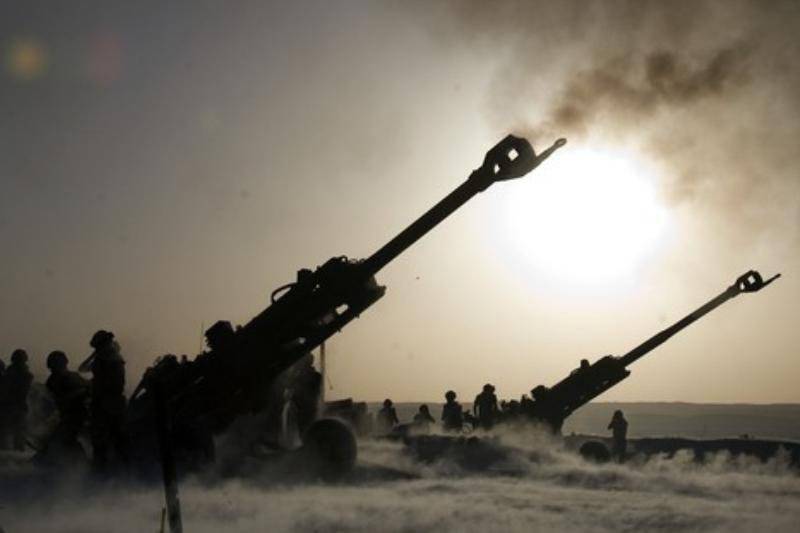
Ultrafine field howitzer UFH (Ultralightweight Field Howitzer), designated M777, is in service with the American army
The changing nature of conflicts raises questions about the future use of artillery. On the one hand, technological progress radically changes the possibilities, but at the same time, limited budgets contribute to a radical revision of the existing structure of the armed forces. On the one hand, the development of computer networks provides new opportunities, but at the same time creates potential vulnerabilities.
Achieving increased accuracy remains a top priority for artillery around the world. Precision capabilities brought to the artillery the most revolutionary changes. Effective implementation of these capabilities while reducing costs remains a top priority. Many countries seek to understand the future operational conditions in an era of asymmetrical combat, characterized mainly by counter-insurgency and the need to respond to an increasing number of small conflicts and civil wars throughout the world.
Comparison of receiver and rocket artillery
Unlike traditional artillery systems, the rocket does not create recoil forces during launch. With the exception of firing in a very small range of angles, barrel artillery, as a rule, must be somehow fixed in order to withstand the forces of recoil, otherwise the probability of damage to the suspension of a self-propelled artillery mount or even its tipping is great. In this position, the guns are still and cannot change their position so easily. Rocket artillery is much more mobile and can easily change position, making it difficult to target the platform. A rocket launcher can fire in motion, but rocket systems create a jet of gas that imposes its own limitations. Launchers can impersonate a jet of exhaust gas at launch, and their fire can damage their own or neighboring cars.
Although rocket artillery cannot compare with the accuracy and tempo of traditional artillery fire maintained for a long time, it can deliver a large mass of explosive at the same time, which thus increases the strike power and reduces the time required for taking cover. It also has a very strong smoke trace signature that indicates exactly where the fire is coming from. But since the volley takes quite a bit of time, the rocket launcher can quickly withdraw from the position.
The higher accuracy of the barrel artillery means that it can be used to fire the enemy near its troops. Together with its higher long-term firing ability, barreled artillery is better suited for defensive fire than rocket artillery, and it is also the only real system capable of conducting counter-battery fire. The use of precision-guided munitions without an accurate and responsive system for localizing targets and transferring information to the guns can lead to the destruction of an erroneous target and for a great price. Accurate target localization is the basis of high-precision preemptive fire, and it must fully utilize the capabilities of advanced precision-guided munitions.
US field artillery systems
The EXCALIBUR and the XM1156 Precision Guidance Kit (PGK) precision guidance kit are an integral part of the US Army ammunition modernization process. The first modified version of EXCALIBUR with improved characteristics, designated Blk Ia-1 (DA39), with a maximum range of 24 km was deployed in Iraq in May 2007, with the aim of improving the accuracy of artillery in this theater. A version of Blk Ia-2 (DA45) with a maximum range of 35 km was deployed in November 2010 of the year, and the Blk Ib version is scheduled to be deployed in 2014 year.
ATK PGK High Precision Guidance Kit with my subtitles
In May, the A and B batteries from the 2013 battalion of the 2 regiment of the US Army in Afghanistan received the XM15 Precision Guidance Kit (PGK) high-precision guidance kits from May. The screwed-on fuse turns standard 1156-mm howitzer shells into high-precision guided munitions for indirect fire. PGK improves the accuracy of artillery systems, thereby reducing civilian casualties, while the efficiency is the same as that of EXCALIBUR, but at a lower price. It allows the calculation of the field gun to “endow” with high-precision capabilities the projectiles used in the M155A155 PALADIN and M109A6 Lightweight 777-mm howitzers.
The PGK system is compatible with two standard artillery shells: the high-explosive M795 High Explosive and the active-reactive M549 / A1 Rocket Assisted Projectile. It uses a GPS receiver and small aerodynamic surfaces to obtain a more accurate projectile trajectory. When a projectile is flying along a GPS ballistic trajectory, the receiver provides the current coordinates of the projectile and the flight pattern. The system compares this data with the coordinates of the target. The handlebars are rotated for the purpose of small correction of the ballistic trajectory, which ultimately allows you to send a projectile along a more accurate trajectory. The first PGK shipments were completed by the end of June 2013, after training courses in Afghanistan in March of the same year. The M107 HE projectile will also be replaced by the practical 155-mm M1122 projectile. 155-mm XM1123 extended range infrared illumination and 155-mm XM1124 extended range visible light are being developed.
Radars in the modernization of artillery
As part of the strategy for upgrading the field artillery of the US Army up to 2020, the main target-detection radar for field artillery is expected to be the Lightweight Counter Mortar Radar light anti-vehicle radar AN / TPQ- mounted on the HMMWV and the AN / TPQ- 50 QRCR (Quick Reaction Capability Radar). AM / TPQ-53 provides the same capabilities as the former AN / TPQ-53 radar, but also reduces operating costs. It provides detection, identification and tracking of attacking shells and missiles in the 37 ° and 90 ° sectors. Its range is from 360 meters to 500 km. These radars provide all-view (60 °) detection in counter-battery fire and give a warning about attacking enemy missiles, artillery shells and mortar rounds. The deployment of the Q360 radar is scheduled for the beginning of 53 of the year, and the Q2014 radar for the end of 50. Of course, everything will depend on the end of the tests and the course of production.
The radar with automatic adjustment can be installed in 5 minutes, removed in 2 minutes, it is serviced by the calculation of 4 people. The radar is connected via digital tactical radio stations to the Advanced Field Artillery Tactical Data System (AFATDS) advanced tactical data transmission system for quick arming of fire missions.
The U.S. Army issued $ 81 million to Raytheon in July 2012 to develop and manufacture a new version of AFATDS. She will integrate and use information to create a common operational picture, starting from task planning and ending with its implementation. Its functions are coordination and control of military elements, providing close aviation support, ship fire, attack helicopters, offensive electronic warfare, field artillery and guided missiles. AFATDS provides automated operational control for the Fires Warfighting Function system used by the army, fleet and the US Marine Corps; More than 5000 of these systems are in operation worldwide. The new version of AFATDS 6.8X will also focus on improving and simplifying the user interface, while increasing the speed and expanding its capabilities.
JETS system
The JETS (Joint Effects Targeting System) advanced fire synchronization computer system is part of a new generation of handheld precision targeting devices (HHPTD) hand-held precision guidance devices. JETS is designed to enable advanced observers to accurately determine the coordinates of the target and effectively use high-precision ammunition without measuring the coordinates of the target (location measurement to determine the absolute latitude, longitude and pickup angle). JETS will allow advanced observers to recognize targets at ranges of 3000 meters by day and 1300 meters at night with sufficient accuracy (without measurement) for firing high-precision ammunition (10 meters error in determining the coordinates of the target at a distance of 2,5 km).
The mass of the manual device of the JETS system will be no more than 2 kg; with it you can perform round-the-clock observation, detection and localization of targets. With the Target Location Designation System (TLDS) detection and targeting module, the JETS system is able to detect fixed targets at a distance of up to 5 km and moving targets on 3 km. Separate artillery units of the US Army will be equipped with a system for 2016 year.
AS90 and M777 guns
The 155-mm self-propelled gun AS90 along with the 105-mm light gun Light Gun is armed with six regiments of the British Royal Artillery. Each battery has four Fire Support Teams (FST) fire support groups and can accept up to six guns. Replacing the barrel with a 39 caliber length and a 52 caliber length increases the range to more than 40 km, and the additional armament consists of an 7,62-mm machine gun. The AS90 SAU has all-view protection against 7,62-mm armor-piercing bullets; The machine is also equipped with a system for protection against weapons of mass destruction and an automatic fire extinguishing system. Once the enemy’s location is determined, the FST coordinates the guns, mortars, helicopters and jet fighters for striking. AS90 fired at Iraq, while troops deployed in Afghanistan were trained to operate the L118 Light Gun. As expected, the AS90 SAU will remain in service until the 2023 year.
BAE Systems’s M155 777-mm howitzer is considered to be the main strategic system of the future and will soon become a NATO standard in its class. M777 155 mm / 39 caliber has a mass of 4218 kg, rate of fire 5 - 8 shots per minute, quickly deployed in 2 - 3 minutes and can be transported by a medium-sized helicopter.
The Lightweight 155-mm howitzer was developed at the end of the 80-s to meet armament requirements that would have a range like that of the M155 towed howitzer, but would weigh no more than 198 kg. The Marine Corps searched for a lightweight 4000-mm system to replace all existing 155-mm and 105-mm towed artillery systems. BAE Systems' M155A155 lightweight 777-mm howitzer, already in Afghanistan, is a joint program of the Marine Corps and the US Army. As a core element of the American PM-TAS towed artillery program, the M2A777 howitzer replaces the outdated Marine Corps 2-mm M155 cannon. It can fire projectiles without a rocket booster at a range of 198 km, shells with an accelerator at a range of 24 km, and EXCALIBUR projectiles at a distance above 30,5 km. M40 weighs about 777% by weight of a typical 50-mm howitzer. The M155A777 light howitzer is the first artillery system made of titanium and aluminum alloys, it can be delivered by air to remote high-altitude areas that cannot be reached by ground transport, V-2 OSPREY convertible plane, as well as medium and heavy helicopters. To date, deployed over 22 such systems.
Planned improvements to the digital fire control system and the laser ignition system of this howitzer, which is designed to process the Modular Artillery Charge Modular Artillery Charge System (MACS). It is believed that the power supply system of the digital SLA is not capable of providing adequate capabilities during the conduct of Afghan operations. Under the PM-TAS program, the Advanced Power Condition and Control Module, an advanced power condition and control module, is currently being qualified to be installed on all howitzers, and an improved power supply unit will replace the lead-acid batteries.
Reactive systems: Russia and not only
The Russian army is upgrading its 300-mm MLRS BM-30 Smerch (designation 9K58 Smerch) by installing new navigation systems and targeting. The system is designed to destroy unarmored and armored targets, artillery and rocket systems; she took part in the hostilities in Chechnya, is in service with the armies of Belarus and Ukraine and was exported to Kuwait, Algeria, Azerbaijan, Peru and the United Arab Emirates.
Improved guidance will allow the Tornado to hit targets at a distance of 200 km. She currently fires an 300-mm 9M55K missile at a range of 20 - 70 km. The 9M55K rocket weighs over 800 kg. Battery MLRS Smerch, as a rule, consists of six launchers and six transport-charging machines (TZM). Intelligent podnaryady have dual-band infrared sensors for targeting in the final part of the trajectory and fragmentation warhead, which is able to penetrate 70-mm armor at an angle 30 ° to the normal.
The GLONASS satellite navigation system for the Smerch MLRS will be included in the modernization of the Tornado-S artillery system and will also direct guided missiles at ranges up to 120 km. The Russians also export to Jordan a heavy flamethrower 220 mm TOS-1 Pinocchio. TOS-1 carries 30-kg missiles with thermobaric warheads. The system is mounted on the chassis. tank T-72, but the option for Jordan will be installed on the chassis of the M-60 tank. The Russian army is also upgrading its 16-shell 220-mm MLRS hurricane through the installation of navigation and sighting systems. It was exported to Belarus, Guinea, Moldova, Angola, Kazakhstan, Uzbekistan, Turkmenistan and Ukraine (and it is worth noting to Syria).
MLRS development and conducted in the BRIC countries. In August, 2012 of the year India organized a joint venture with Rosoboronexport for the production of five variants of the RSMO Smerch based on Russian technologies. Smerch-M is the only Indian long-range rocket artillery system. Rosoboronexport supplies Smerch systems to other countries as well, developing their rocket artillery.
What is available and who buys
In 2011, the Brazilian Ministry of Defense decided to upgrade ASTROS to the configuration of ASTROS 2020 (ASTROS III) as part of a modernization program worth 760 million dollars. It will be financed by 30 ASTROS 2020 systems, which will be able to shoot high-precision AV / MT 300 cruise missiles at a distance of 300 km. The Brazilians are going to oppose their system to the American tactical missile system of the ground forces ATACMS (Army Tactical Missile System), although the ATACMS is firing ballistic and not short-range missiles. ASTROS is also in service with Bahrain, Malaysia, Qatar and Saudi Arabia and will be manufactured in Iraq under a license under the designation SAJIL-60. At the end of 2012, Indonesia ordered 36 launchers from Avibras, which will also supply OMS and other equipment and systems.
Brazilian launcher ASTROS III - characteristics of guided and unguided missiles
The ASTROS III launcher mainly targets the export market. The 8x8 wheeled chassis was selected because of its heavy payload and increased maneuverability, since it will be intended for transportation of five types of unguided rockets of various calibers and two types of guided missiles (see table). The stability of the platform is guaranteed by four hydraulic supports that descend to the ground. This launcher is serviced by a transport-loading vehicle carrying two sets of ammunition for each launcher, and a control vehicle with a fire control system (AV-VCC) that provides battalion level command with fire coordination to three ASTROS batteries.
ST Kinetics offers several systems in this segment. First, it is a lightweight howitzer 155-mm / 39 caliber PEGASUS with the ability to move. It is transported in a C-130 aircraft or a CH-47 helicopter and has a hydraulic (impulse) feed and dispensing system, which reduces the load on the calculation and increases the rate of fire. Secondly, self-propelled howitzer tracked 155-mm / 39 caliber PRIMUS. Advanced automation technology has been introduced into the PRIMUS mobile and lethal howitzer, which allows the minimal calculation of 4 people (including the driver) to effectively manage the system. The calculation can choose the type of ammunition through the OMS, and the ammunition is then loaded with an automatic ammunition processing system. Thirdly, the ST Kinetics 120-mm mortar SRAMS is one of the first mortars, whose recoil forces are less than 30 tons when firing maximum charge, allowing to reach the range 10 km. With a mass of just 1200 kg, it can be installed and fired from a wide variety of light tracked and wheeled vehicles, bringing great fire power to the lower echelons. Fourth, the FH2000 155-mm / 52 caliber howitzer complies with a joint ballistics memorandum that can fire 155-mm projectiles of NATO standard at a distance of up to 40 km. Its loading mechanism allows you to get a shooting rate of up to three shots in 20 seconds.
Aselsan pays special attention to the development of its own weapon systems, among which you can see products for air defense, coastal defense, border security and defense of offshore platforms. The 105-mm light tracked howitzer control system provides computerized planning and execution of firing tasks for a light howitzer. It is designed to increase the mobility of artillery and provide direct fire as well as digital integration into other fire support systems. The system was developed by companies to meet the needs of the Turkish army and is ready to adapt to the requirements of foreign buyers. The Aselsan fire control system (FCS) for towed and self-propelled howitzers combines fire control, communication systems and target designation, which provides rapid deployment, redeployment, high-precision gun guidance and integration into modern artillery operational control systems.
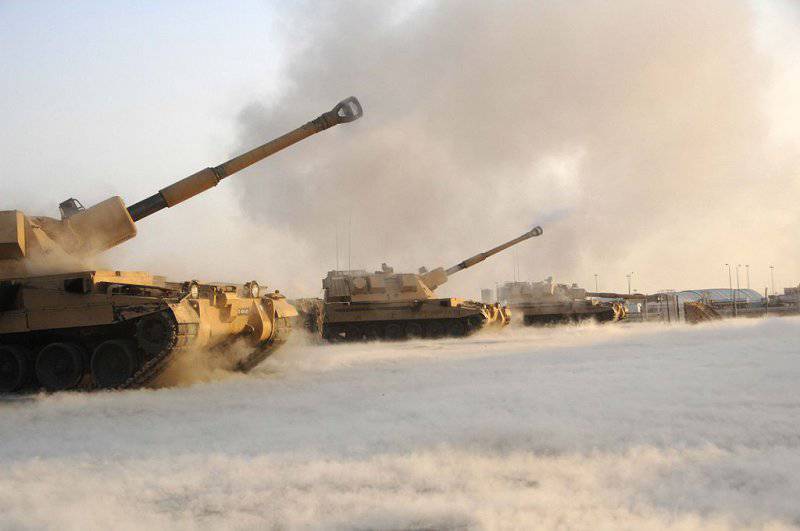
British soldiers from the 3 regiment lead to normal combat with their 155-mm ACS AS90 in Iraq in August 2008
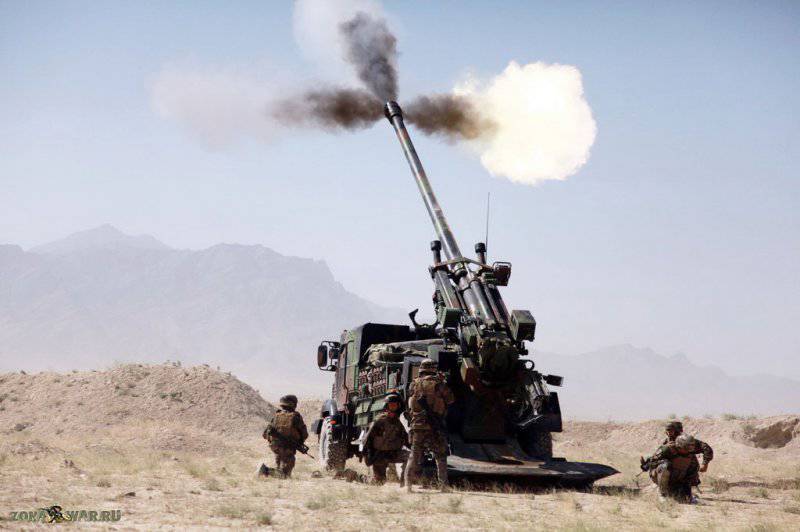
Versatility, mobility, ease of maintenance, the ability to sustain continuous fire and survivability are key features of the Nexter CAESAR (for the standard 155-mm / 52 caliber). The howitzer is fully compatible with NATO’s 39 caliber ammunition and meets operational requirements regardless of the location of the operation, the level of conflict or the nature of the forces involved in it, thanks to its tactical mobility and maneuverability (6x6 truck chassis)
The Roketsan 107-mm MLRS Multi Barrel Rocket Launcher Weapon System is a weapon system that can be used around the clock and in any weather for fire support of combat units. The towed T-107 is an excellent short-range weapon system. It can be transported in its entirety or in a disassembled form, by ground platforms and a helicopter, on board or on a suspension together with its ammunition, or it can be dropped by parachute with ammunition from 48 missiles.
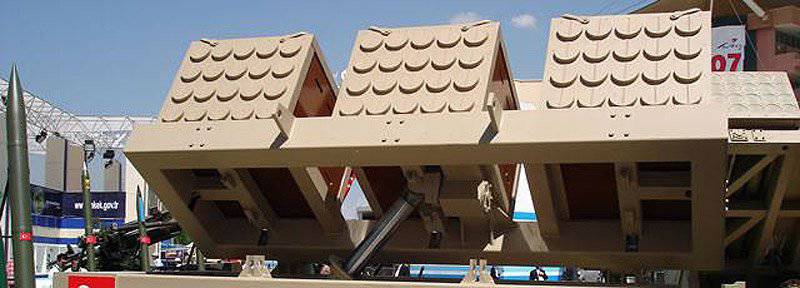
107-mm MLRS Multi Barrel Rocket Launcher Weapon System from the Turkish company Roketsan
The lightweight, towed 105-mm gun was specifically developed by Nexter for quick deployment connections. Priority was given to reliability, ease of operation and weight reduction. In the fighting 105LG1 MkIII has shown its reliability, mobility, maneuverability and firepower. Today, it represents the perfect weapon fire support for troops serving in all weather conditions, including the most difficult terrain. She can fire all NATO standard ammunition, including the G3 OE-LP from Nexter Munitions, over a distance of more than 17 km. TRAJAN is another highly accurate and powerful towed caliber 155-mm / 52 system capable of supporting any motorized rifle or armored unit. It combines the fire power of a CAESAR 155-mm / 52 howitzer and a modern towed gun equipped with an SLA and automated functions, such as firing start / end shooting, guidance, loading. TRAJAN achieves high accuracy due to the initial speed measurement radar, inertial navigation unit and ballistic computer. TRAJAN was designed to achieve high performance in all types of fire operations, for example, it is direct fire support, fire support in the depth of defense, counter battery fire. Its 155-mm / 52 caliber cannon is fully compatible with all 155-mm 39 / 52 NATO-standard ammunition and can fire ERFB (bottom-range projectile) projectiles and intelligent ammunition (BONUS, SPACIDO ...).
Oriental cannons
Among the countries of the former Eastern bloc, only the Russian, Chinese and North Korean industries offer many types of guns.
In Russia, production in the last quarter of a century was limited by two factors; all potential buyers, including the Russian army, had an excessive number of cannons in their arsenals, while new products did not show revolutionary changes and therefore did not greatly add fire power to artillery units.
The heaviest Russian self-propelled gun is the 2X7 Pion 203 mm caliber gun, which has a range of over 44 km and nuclear ammunition in its arsenal. This is the only Soviet gun that does not have a towed version. The second very effective weapon is the 52-mm self-propelled 2C5 Hyacinth unit with a towed version of the 2A36 Hyacinth-B. Both self-propelled guns do not have the protection of the calculation (guns are installed externally) and modern automated guidance system. Consequently, the reaction time and flexibility of their use is below average.
The 152-mm howitzer 2C19 Msta and its towed variant 2A65 Msta-B are the most modern guns in the Russian nomenclature. Self-propelled gun has a semi-automatic loader and automatic target distribution system. However, its range is far behind such Western counterparts, such as, for example, PzH-2000 or FIRTINA / K-9. The further development of 2C19 is the ACS 2C35 Coalition-SV, which has turned into a double-barreled monster. A new gun is installed in an uninhabited tower and three members of the crew are sitting in the hull of a unified chassis of the new generation Armat. The wheel variant of the Coalition is also being considered, where such an autonomous tower will be installed on the 8x8 Kamaz or Typhoon truck chassis.
A light 152-mm howitzer 2A61 Pat-B fills the gap in artillery of the regimental level, while the outdated 122-mm floating howitzer 2-1 is upgraded to the host's 2-34 standard. In this case, a short-range cannon, firing old ammunition, is replaced by an 120-mm howitzer-mortar with a long barrel and a 13 km range. A long-term replacement will be a new automatic cannon with a combat module adapted for the loading capacity of both Russian prospective armored platforms, the crawler Kurganets and the wheeled Boomerang.
The need for light towed guns arose during the Caucasian conflict, then some prototypes were manufactured and tested, but, apparently, no final decision has yet been made. A large number of obsolete, towed howitzer D-30 caliber 122 mm and D-20 caliber 152 mm still remain in service.
The unique coastal defense weapon is the 130-mm Coastal cannon mounted on the heavy MAZ-543M platform. A small number of such installations were deployed by the Black Sea fleet. Another unique type of gun is a howitzer mortar, firing artillery and mortar ammunition. This type includes 120-mm tracked 2C9 Nona, wheeled 2C23 Nona-K and towed 2B16 Nona-B.
Russia still has strong anti-tank artillery with 100-mm smooth-bore guns MT-12, firing conventional shells and more popular guided missiles. The newest version, designated MT-12P, is equipped with a modern radar sight Ruth. The heavier Sprut-B 125-mm gun is still very rare in the troops, while the 2-25 ACS Sprut SD was ordered in very small quantities for the Airborne Forces. It is likely that 2C25 will soon be replaced by one of the members of the Kurgan family, armed with an externally mounted gun.
While China is still pursuing the developed countries, seeking to achieve the capabilities of their weapons systems, new solutions are emerging, but the truth is not clear in what quantities and whether they are made at all.
The largest Chinese implements are X-NUMX-mm ACS W-203 and towed Type-90. The W-90 is a rough copy of the M90A110 cannon, while the Type-3 has a Soviet-style barrel and an American-style breech. Whether they actually entered service and in what quantities is unknown.
The Chinese seem to prefer the 155-mm guns. Two models of ACS, the old PLZ-45 and the new PLZ-05, are in service with only elite units. The latter looks similar to the Russian 2C19, but has a longer barrel and a tower in the rear. The newest gun PLZ-52 is a model of the PLZ-45 with an extended barrel, and, apparently, is focused on export.
China also still "trusts" small-caliber howitzers, where Type-89 (similar to the Soviet 2C1) is probably the most common howitzer in the Chinese army, although recently there are two new models. SH-03 is a different embodiment of the Type-89 with a new turret mounted on a unified armored vehicle (high level of unification with the ZBD-97 infantry fighting vehicle), and PLZ-07 is a member of the amphibious assault vehicles family.
In China, a number of wheeled self-propelled guns also appeared. They basically replicate global trends. SH-1, SH-2 and SH-5 are 155-mm, 122-mm and 105-mm cannons, respectively, mounted on special cross-country vehicles, while others are installed in the towers on 8X8 armored personnel carriers. It is not clear whether only one of these installations has been put into service. Official photos show that at least one 122-mm howitzer on the chassis of a Shanqi SX-2150 6x6 truck was adopted by the Chinese army.
In China, there are no new towed guns, that is, the basis of artillery units are obsolete 152-mm and 122-mm howitzers. More modern 155-mm gun PLL-01 (copy Noricum GC-45), apparently, are quite rare.
China, following the Soviet-Russian way, has developed towed and self-propelled anti-tank artillery. Uniquely Type-89 self-propelled anti-tank gun with 120-mm gun. The lighter options are wheeled anti-tank installations; the newest has a 105-mm gun. Another copy of the Soviet design - 120-mm rifled mortar-howitzer PLL-05 on the armored chassis 6x6.
No one knows, with the exception of the North Korean generals, how many guns can be deployed by Kim Jong-un's army in case of an emergency. A poor and isolated country has developed a number of types of self-propelled units, beating the world record (at least 11 types are exploited!), But their characteristics, reliability and especially the real number remain unknown.
The heaviest are the two versions of the 170-mm gun. The outdated gun is mounted on the turretless tank chassis of the T-54, a newer gun is installed on the specially modified chassis T-54. The lighter options are 152-mm howitzers and cannons, 130-mm cannons, 122-mm howitzers and 100-mm guns. Most of them are installed in open armored compartments (casemates), and only the newest ones in rotating towers. It remains unknown, they are all in mass production or manufactured in small batches. The technical level of these guns is close to the technology of the Second World War, but, nevertheless, small batches were exported to Arab and African countries. The overwhelming majority of North Korean stocks are towed guns, including the outdated Soviet 76-mm ZIS-3 cannons, which are still in service. Perhaps the most advanced tools are the X-NUMX-mm lightweight howitzer D-122, manufactured under license.
In the past, most of the Warsaw Pact countries could produce small-caliber and medium-caliber guns, some even of local development; Soviet licenses were preferable at that time. Currently, Slovakia manufactures DANA / ZUZANA 152-mm and 155-mm wheel howitzers (on the Tatra chassis) and ammunition for them. In 2008, the Polish army ordered an initial batch of eight tracked KRAB 155-mm self-propelled guns on a local development chassis. The gun and the tower are licensed (British AS-90), and the barrel was purchased in France. Another Polish product is the RAK 120-mm mortar; The combat module is mounted on tracked (2C1) or wheeled (ROSOMAK / Patria AMV) chassis.
Also in the "gun business" came a few new players. Cuba is armed with self-propelled guns of its own design based on Soviet base chassis and guns. Two types stand on the modified BMP-1, 100-mm anti-tank gun and 122-mm howitzer. Howiters D-30 and more powerful 130-mm M-46 installed on the tanks T-34. The most heavy and possibly the most modern are 130-mm cannons and 152-mm howitzers on specially made wheeled vehicles. Syria in the past made primitive self-propelled guns (D-30 on T-34), and recently showed a more modern solution - the 130-mm M-46 cannon on the chassis of the Mercedes 8X8 truck. Similar layout is in the prototype of the Sudanese howitzer KHALIFA GHY-02 (D-30 on the chassis of the KamAZ 8x8 truck) and in the self-propelled unit SEMSER developed by Soltam for the Kazakh army.
Materials used:
Military Technology 9 / 2013
http://www.atk.com
http://www.stengg.com
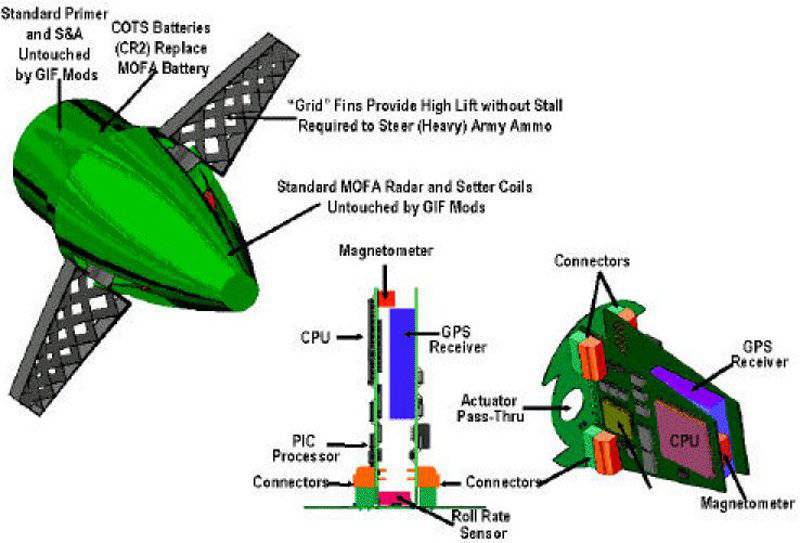
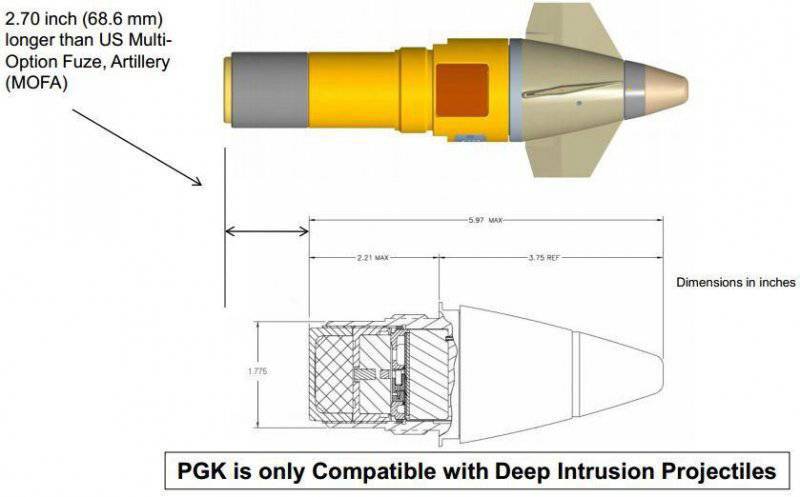
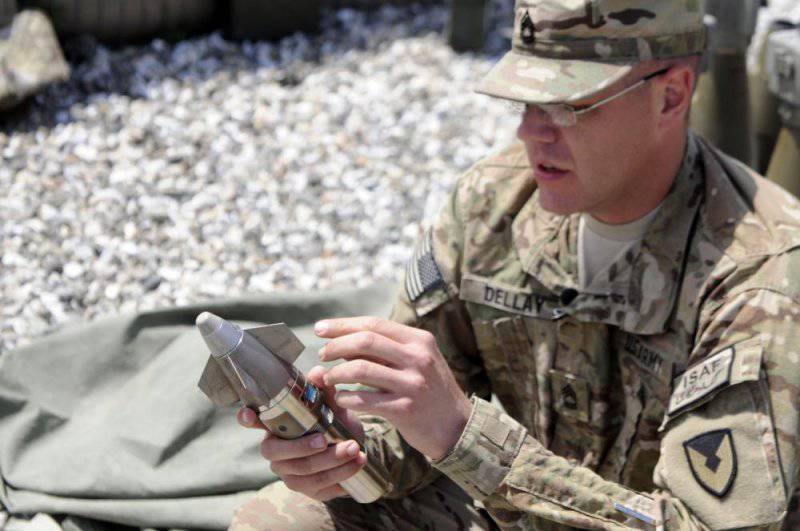
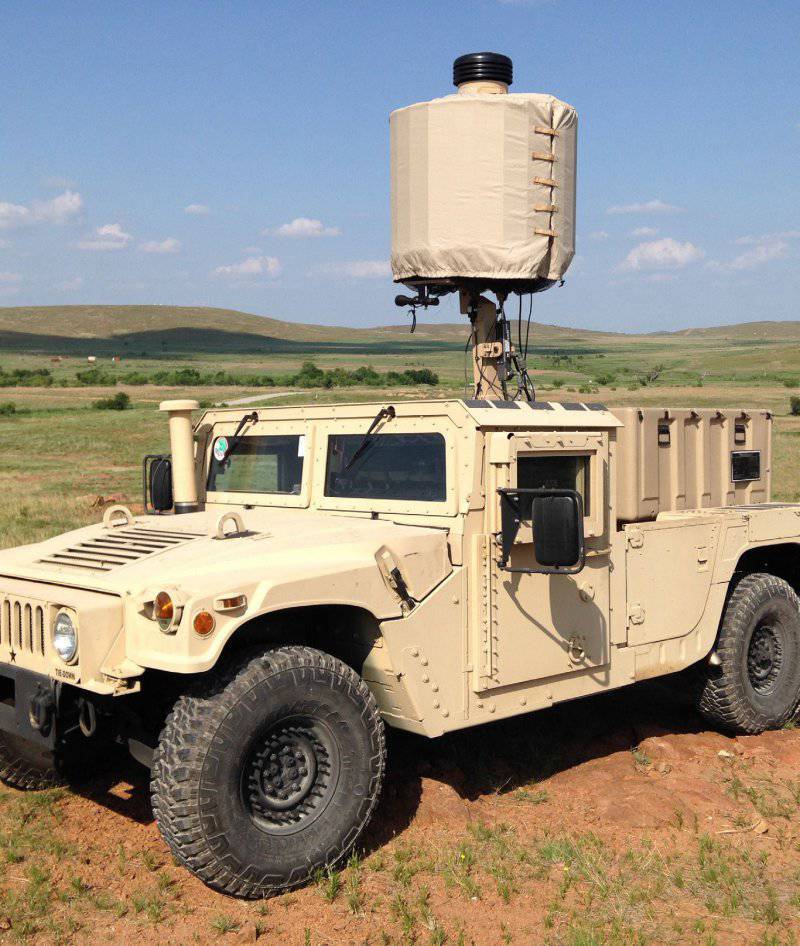
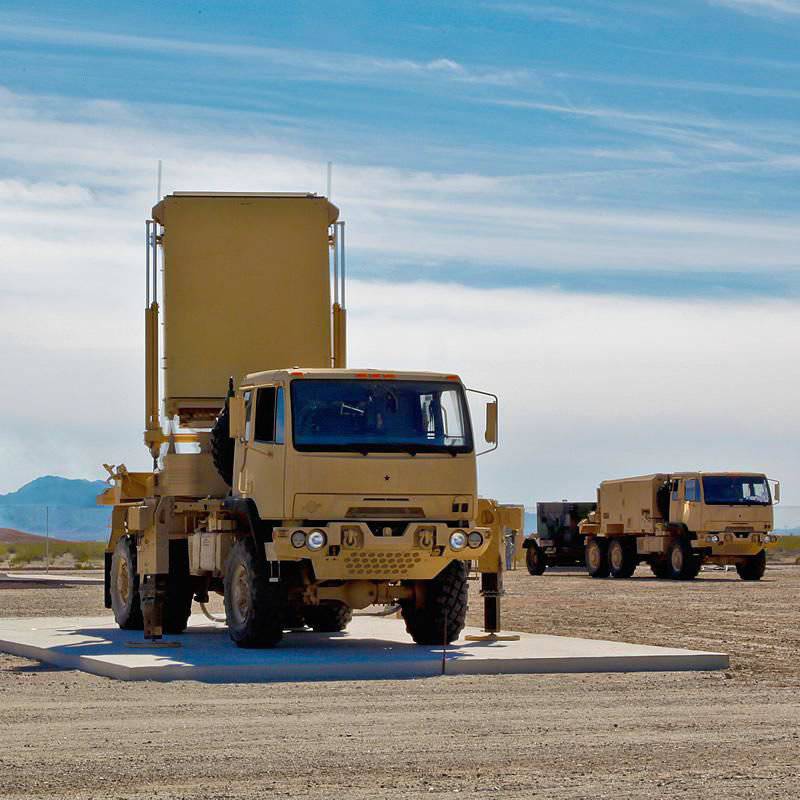
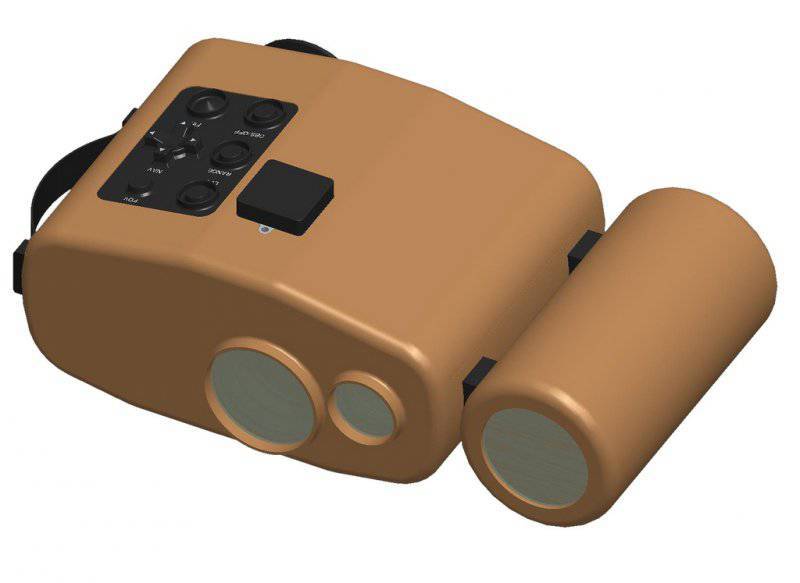
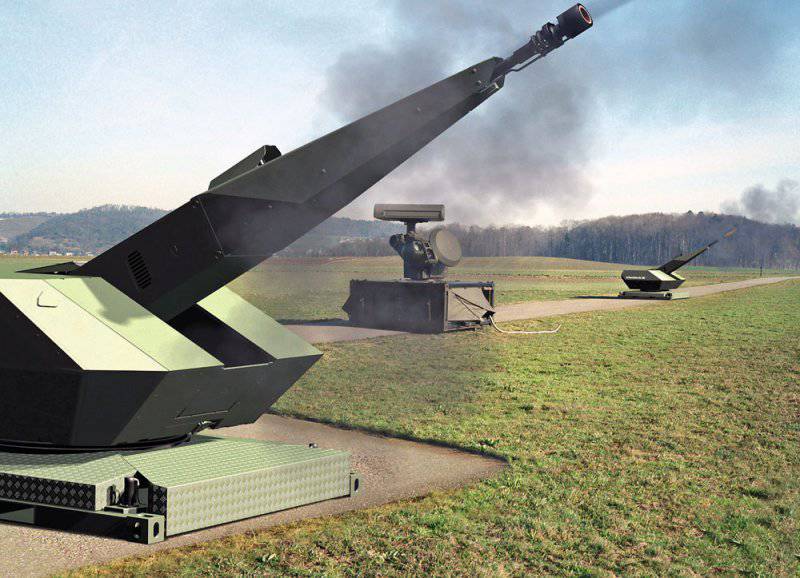
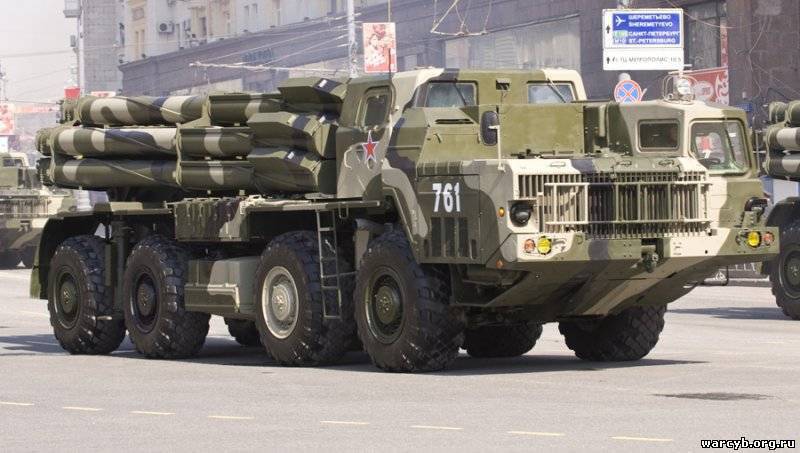
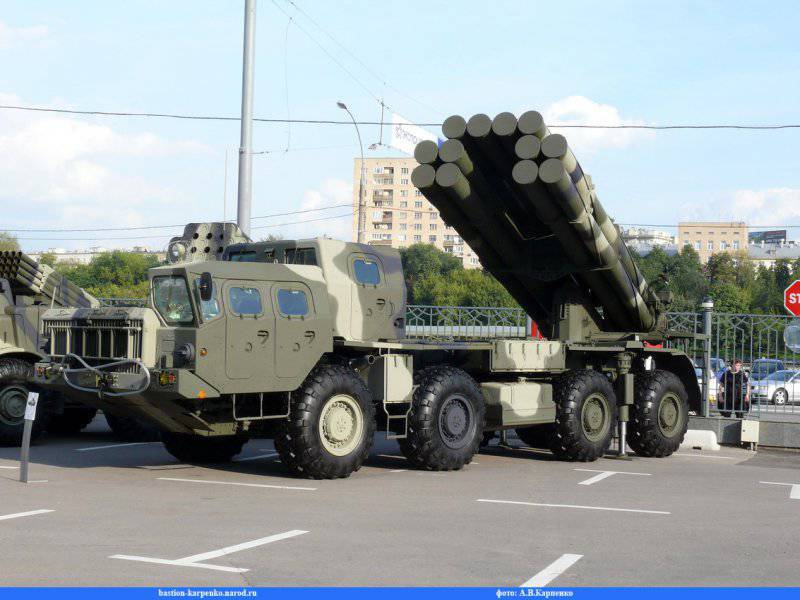
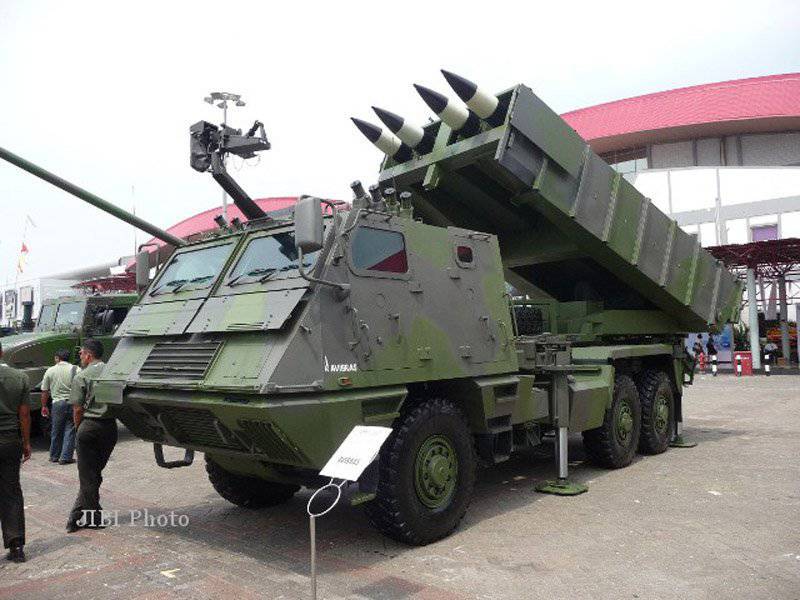
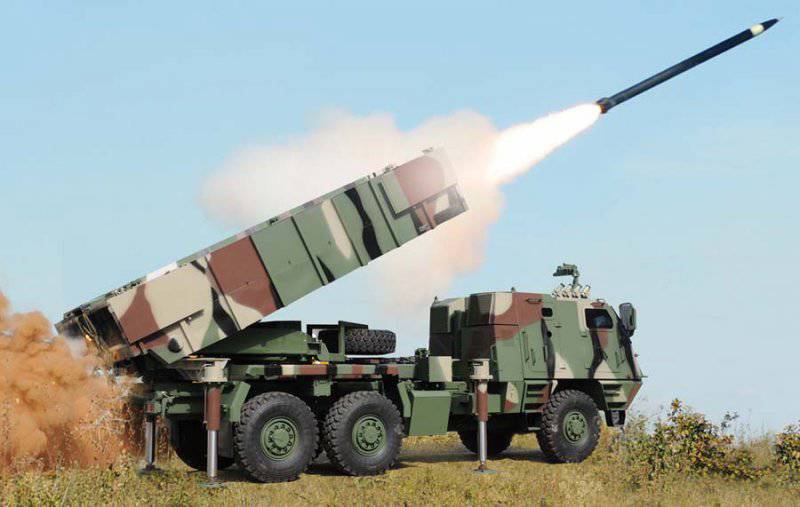

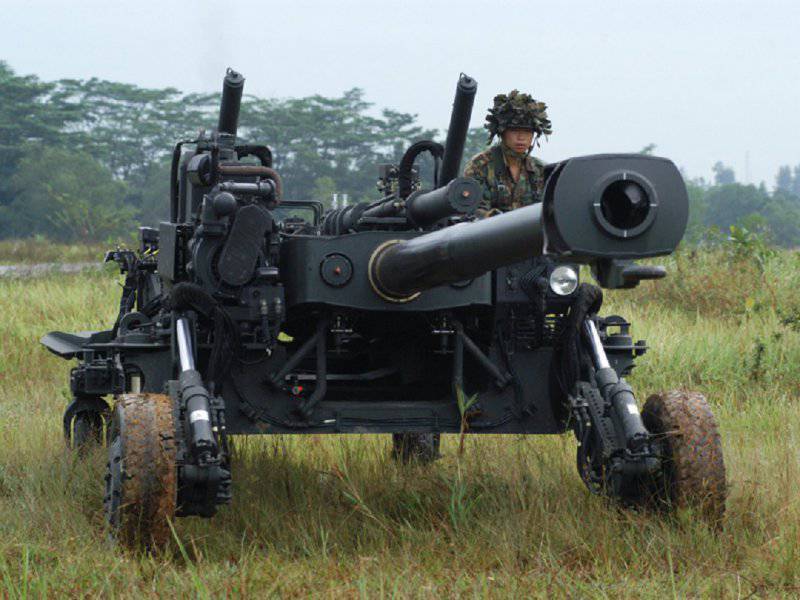
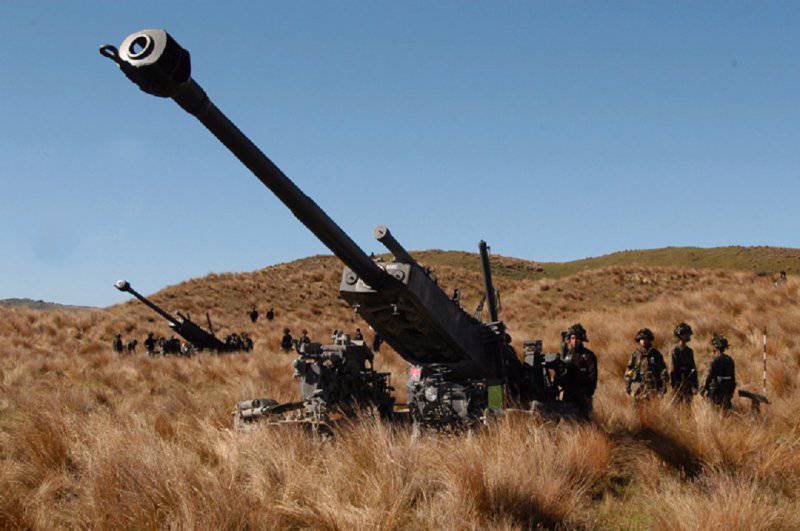
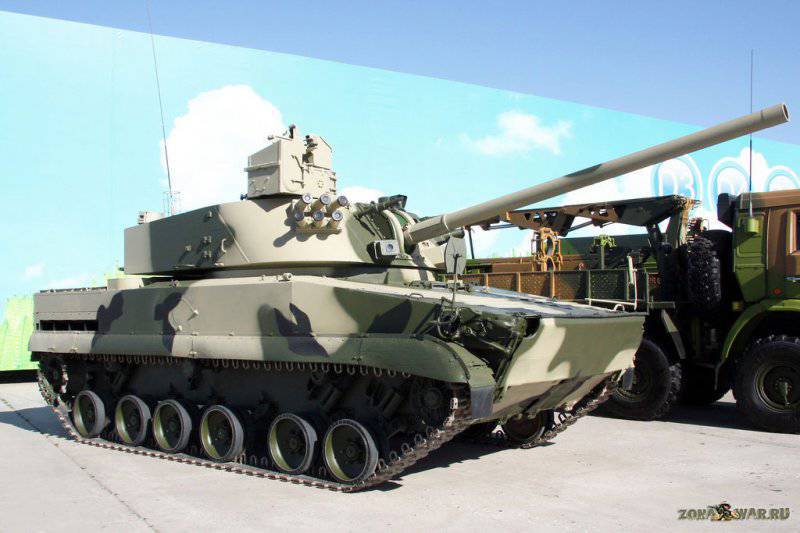
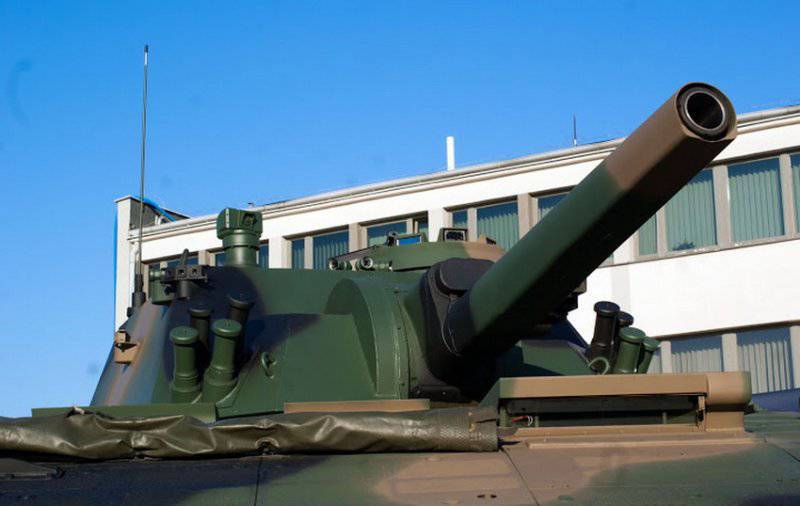
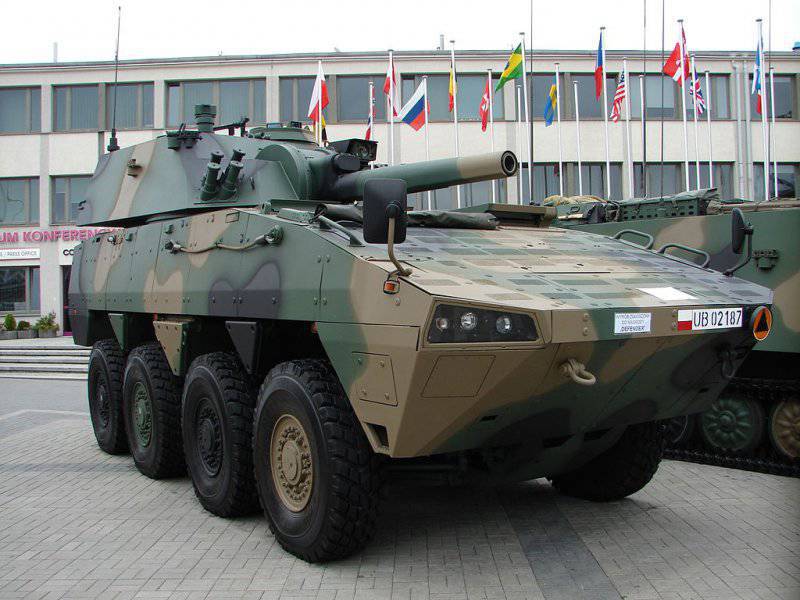
Information